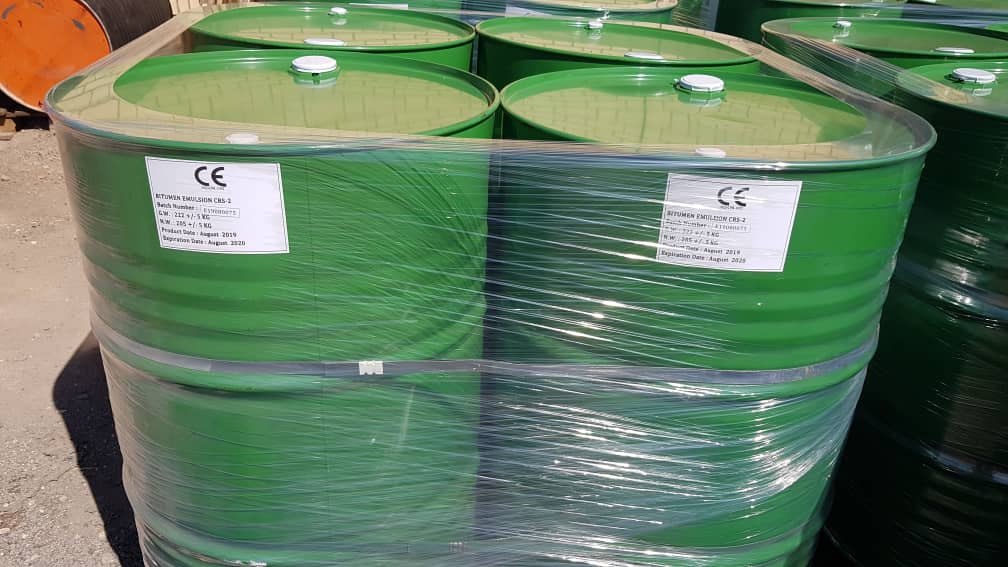
What is Cutback Bitumen MC-250?
Cutback Bitumen MC 250 is a specific type of bituminous material utilized in various road-related projects. The acronym “MC” stands for “Medium Curing,” indicating its curing properties, while the “250” represents the viscosity of the cutback bitumen. MC-250 is a medium-viscosity cutback bitumen, meaning it has a moderate thickness or consistency, making it suitable for a range of applications.
MC-250 is primarily composed of bitumen, which is derived from the distillation of crude oil. To achieve the desired consistency and properties, a medium-grade solvent, typically kerosene or diesel oil, is blended with the bitumen. The solvent helps reduce the viscosity of the bitumen, making it more workable and allowing it to be applied at ambient temperatures.
MC 250 cutback bitumen is commonly used in road construction and maintenance for various applications, including prime coating, tack coating, and surface dressing. It is applied by spraying or brushing onto the surface of the road to improve adhesion between layers of asphalt pavement or between the existing road surface and new asphalt overlays.
The solvent used in MC 250 cutback bitumen is typically a volatile petroleum distillate, such as kerosene or diesel. As the solvent evaporates, the bitumen hardens and forms a waterproof and durable layer on the road surface.
As with any cutback bitumen product, it is important to follow proper safety precautions when handling and applying MC 250 cutback bitumen. The solvents used in the mixture can be flammable and pose health risks if not handled properly. Additionally, local regulations and guidelines should be followed to ensure the safe and effective use of MC 250 cutback bitumen in road construction projects.
Application of Cutback MC-250
Cutback Bitumen MC 250 Application is in permeable prime layers and production of adhesive or storage mixtures. Cutback asphalt used in mixing with aggregate usually contains a binding agent to help coat the surface of the aggregate. Also, cutback bitumen is ideal for primary coating and cold application due to its easy application and no need for thinning and heating.
More applications of Cutback Bitumen MC 250 are:
- Prime Coat: MC 250 can be used as a bonding agent, promoting adhesion between the existing road surface and the new asphalt layer, and it helps to prevent moisture infiltration.
- Tack Coat: MC 250 can be used as a tack coat between the layers When constructing multiple layers of asphalt. It ensures a strong bond between the old and new asphalt layers, reducing the likelihood of delamination and improving the overall structural integrity of the road.
- Repair: MC 250 can be used In road maintenance and used for patching and repairing damaged or deteriorated sections of asphalt roads.
- Surface Treatment: MC 250 can be used in surface treatment applications. It is sprayed onto the road surface and then covered with a layer of aggregate or chips.
Safety Tips of Bitumen MC 250
Bitumen MC 250 is a hazardous material and should be handled with care. Some safety tips when using Bitumen MC 250 are:
- Protective Equipment: Always wear appropriate PPE when handling Cutback Bitumen MC 250, including gloves, safety goggles, and protective clothing.
- Ventilation: Ensure that there is adequate ventilation when using Bitumen MC 250, as the fumes can be hazardous.
- Handling and Transfer: Transport Bitumen MC 250 in approved containers and vehicles, following all safety regulations.
Packing of Bitumen MC 250
The Cutback Bitumen MC 250 is usually packed in bulk, Steel Drum, and IBC Tank but The packing type depends on the quantity of the product and the specific requirements of the customer.
- 1MT IBC Tank
- 200 Kg New Steel Drum- Palletized
- Bulk in Tuck Tanker
Specification of Cutback Bitumen MC 250
| Properties | Min | Max | Test method |
|---|---|---|---|
| Kinematic viscosity at 60°c ,cST | 250 | 500 | ASTM D2170 |
| Flashpoint (tag open cup), °C | 66 | --- | ASTM D3143 |
| to 437°F (225°C) | — | 20 | ASTM D402 |
| To 500°F (260°C) | 5 | 55 | ASTM D402 |
| to 600°F (316°C) | 60 | 90 | ASTM D402 |
| to 680°F (360°C), per cent volume by difference | 67 | — | ASTM D402 |
| Viscosity at 140°f(60°C) | 30 | 120 | ASTM D2170 |
| Penetration 77°F (25°C) 100g,5s mm | 120 | 300 | ASTM D5 |
| Ductility 77°F (25°C) 5cm/min cm | 100 | — | ASTM D113 |
| Solubility in trichloroethylene % | 99 | — | ASTM D2042 |
| Water, percent volume | — | 0.2 | ASTM D95 |

